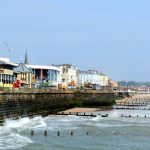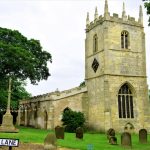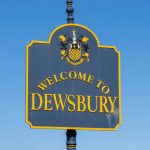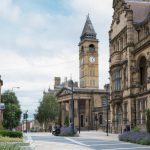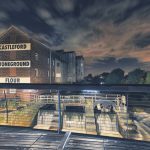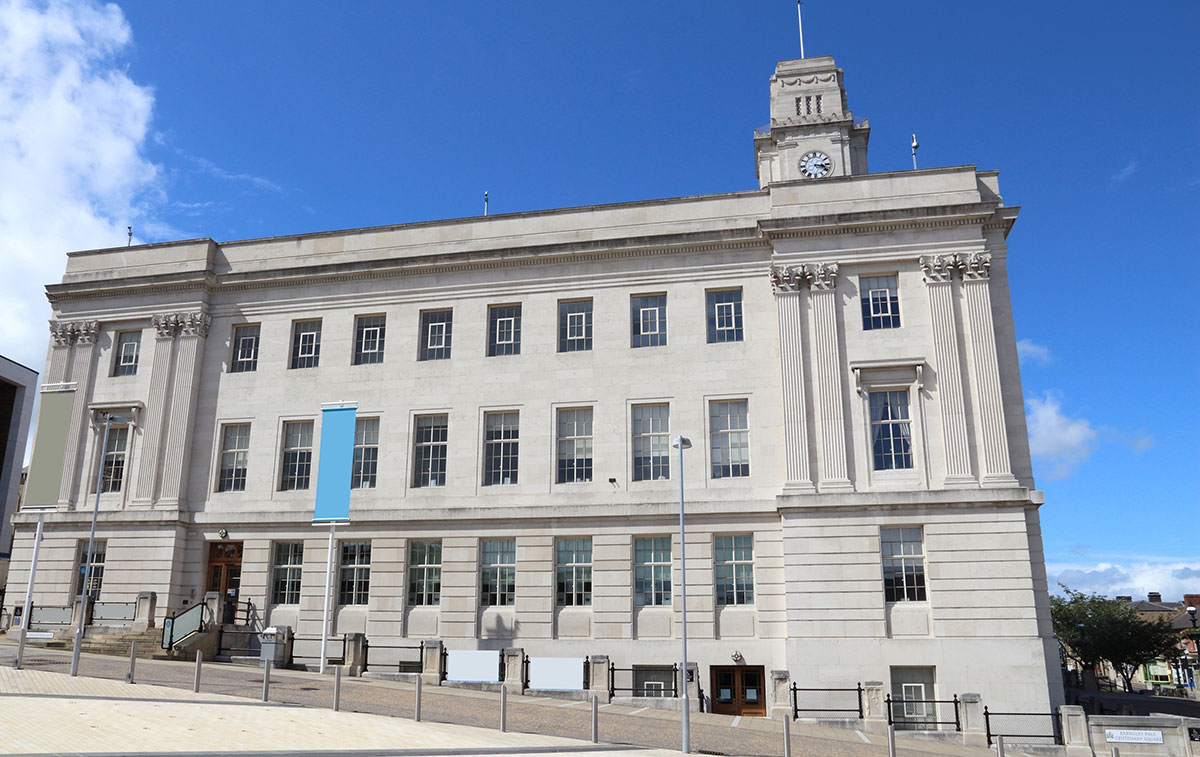
Nestled in the nook of the Dearne Valley, Barnsley, South Yorkshire, is one of the most temperate of the Yorkshire cities. Known for its friendly local people and its former mining communities, Barnsley has a strong sense of history and pride to it… and rightly so. Once a booming glassmaking city, they contributed greatly to the Industrial Revolution, escorted Britain through two world wars, and have a bit of a footballing tradition having been FA Cup Winners and having produced some world-class players.
We will discuss Barnsley FC (“The Tykes” or “The Reds” if you want to speak the local lingo) later but before that, let’s talk the good old days. What has put Barnsley on the map? Historically speaking, that is. It’s time for the Five Minutes Spare foray into Barnsley. Join us and let’s see if we can persuade you to put the town on your staycation adventure list…
A Look at Early Life in Barnsley
Barnsley has only been around since about the 10th century. Although this still makes it old, it isn’t nearly as old as some of the cities in the south, which date back to BC years. We can assume that they didn’t get too much trouble of the Vikings since the River Dove that it sits on doesn’t connect to the sea… although you never know.
What we do know is that Barnsley had a single villager in 1086, which was 20 years after the Norman invasion. You can view the entry for the town (then Berneslai) in the Open Domesday site which lists it as having 0.5 households in 1086. The single villager would have rented from the Lord, registered as Ilbert of Lacy, owner of the land. Ilbert also owned 2 plough teams and 3 ploughlands… all of which would have earned him a tidy profit. The land was registered as the property of King Edward before this, which leads us to believe it was largely unoccupied.
From the humble origins of three fields, the town garnered a name. Its roots are believed to be in Saxon English, which would have been about right for the time. Barnsley would have meant something like ‘the fields with a barn in them’ in old English. The town stayed no more than a barn in a field until 1150 AD when it was gifted to Pontefract Priory. Up until this point, it was under the administrative control of the nearby village of Silkstone. while Silkstone remains a village to this day, Barnsley grew immensely under the control of the monks.
The Monks Influence
We have a lot to credit monks for here in Britain. Between them and the friars, piped water was brought to many a town. Settlements sprang up around them, and they took care of and healed the sick. In the case of Barnsley, they actually moved the initial position of the town so that it sat at an intersection between key roads. Much akin to how fjords would encourage a town, so did this clever placement. The immense growth of Barnsley after this was the result of the needs of travellers to Sheffield, Wakefield, Doncaster, Huddersfield, Chester, and Rotherham… and that’s a lot of traffic…
The monks built many things for the town but the most prominent was a Chapel of Ease which is sadly no longer standing and they gained a royal charter from King Henry III in 1249 which allowed a weekly market and a four day long yearly fair. However, despite this, it remained sparsely populated right up until the 17th century, when it became a major stop-off point in the increasingly busy trade route from London and the major Yorkshire settlements such as Leeds & Sheffield. Despite this, the town remained relatively small right up until the start of the Industrialisation of the northern towns.
The Industrial Revolution
The Industrial Revolution which kicked off in the late 1700s led to a bit of a population boom in Barnsley aided by a 1777 Act of Parliament which allowed construction to expand into the surrounding moors. During the 18th Century, it became an important Linen producer and also had a number of glass-making factories, but more importantly, coal was also becoming more important around this time as a growing population couldn’t depend on food for heading and of course, increasing mechanisation called for more energy. This was the foundations of the Yorkshire Coal Mining industry which would bring relative prosperity to the town for around 200 years.
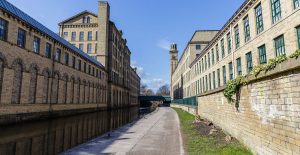
Image: Dave Couldwell/Shutterstock.com
The construction of the Barnsley Canal in 1802 meant that locally mined coal could be transported with ease to the burgeoning wool factories of Bradford, Leeds and Wakefield, and by the early 1800s the town’s population had swelled from a few hundred to over 3,000.
The Train Arrives
In 1840 the railway arrived, well sort of, as it was passenger services only and the original station was located around 3 miles away in nearby Cudworth. Still, it boosted things and in 1850 the town got a station of its own with the opening of the Barnsley Interchange. The trains arriving in 1850 feels like a natural pausing point to lighten things up briefly with a few fun Barnsley facts!
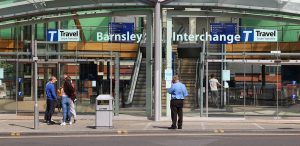
Image: Tupungato/Shutterstock.com
Fun Facts About Barnsley
Asides from all that history, Barnsley has a few fun things to it that make for interesting conversation starters at parties. Whip out a few Five Minutes Spare fun facts about Barnsley the next time you are having a few friends over for drinks. Barnsley is more interesting than you thought…
- Barnsley is often associated with fish and chips… well specifically the chips. If you aren’t munching chips for tea, you are pinning them on a wedding dress to wish the happy couple good luck.
- Barnsley is mentioned (all be it briefly) in the in a Monty Python sketch. It is the episode where a son brought shame to his family by running off to Barnsley to become a miner instead of being an actor like his ma and pa. You can read the script of the sketch here.
- Professional Footballer Geoff Horsefield was born in Barnsley and coincidently they are about the only club he never played for… We are exaggerating a bit, but he did pull on a shirt for 15 different clubs in his quite successful career, which spanned 1992-2013.
You can also visit the forum if you have any favourite facts about Barnsley of your own that you would like to add. If you choose to do so, be sure to come back. We are just about to finish the history section and it would be a shame to have to do it without you!
Moving Into The Modern Age
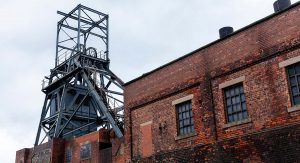
Image: Dave Couldwell/Shutterstock.com
The late 1800s saw Coal Mining rise to prominence in the town and numerous collieries sprung up to help meet industries insatiable need for both coal & coke. However, the town still had a sizable textiles industry (mainly wool & linen) and an impressive glass industry with some of the Wood Brothers Glass being exhibited at the Great Exhibition of 1851. By 1869 its prominence had grown such that it became a municipal borough and by 1901 the population has swelled to 41,086 a staggering rise from the few thousand living there around one hundred years earlier. This grew again reaching 50,614 in 1911 and by 1913 Barnsley was County Borough. Sadly not everything was great and in 1908 the town suffered a great tragedy in what became known as the Barnsley Public Hall disaster in which 16 children lost their lives and a large number of others were injured. On a brighter note, Barnsley F.C. won the FA Cup in 1912 making up for the disappointment of losing in the final two years earlier, beating West Brom 1-0 in the final in nearby Sheffield.
WWI
The arrival of the First World War saw thousands of Barnsley’s men form the ‘Barnsley Pals’ Battalions and head off for the Western Front and many never returned. If you have a relative that was in the army and joined these battalions, you can search them by name and rank in the records, here. Again looking for something cheery to finish on the famed Grimethorpe Colliery Brass Band was formed 1917 and they would go on to gain worldwide recognition in recent times thanks to the 1996 film “Brassed Off”.
Post-war the town recovered and in 1921 Barnsley expanded to include the then villages of Ardsley and Monk Bretton and before WWII broke out Carlton had also been absorbed into its boundaries. Things were going well and in 1933 the Town Hall was opened by H.R.H Edward, Prince of Wales who would later become King Edward VIII.
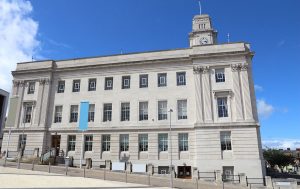
Image: Tupungato/Shutterstock.com
In 1936, George Orwell moved into a miner’s cottage to experience their lives first-hand to research his novel ‘The Road to Wigan Pier’. He was not impressed by the declining plight of the working class in the town and used his voice to protest the council’s elaborate refurb of the town hall – while miners were living on bread and water. The life of a miner in the interwar years was not an easy one. Many of them eventually succumbed to a disease nicknamed ‘black lung’, which came from the brick dust breather in underground. They were not paid well – to the point where some of them picked their own coal out the scraps – and risked their lives on a daily basis to fetch the coal that fuelled the industrial advancements we still use to this day. Each and every miner in Britain was a hero. Let nobody tell you otherwise.
Barnsley was spared much of the bombing in WWII with the Luftwaffe focussing most of their runs on the larger and more strategically important steel-making town of Sheffield. This was fortunate as it allowed the town to absorb large quantities fo evacuees from London and post-war many stayed on. The town did, however, send a large number of its men into battle and there are a number of memorials throughout the town to those who served and those who made the ultimate sacrifice.
Mining Expands
Post-war Coal Mining expanded as a rebuilding Britain needed the resources and by 1960 there were 70 collieries within 15 miles of the town. Miners welfare although not great still had improved and the town was relatively prosperous throughout the 1960s & early 1970s. By 1971 the census showed that the population of Barnsley had reached 75,439. Things took a turn for the worst after the miner’s strikes of 1972 & 1974 which let to a move towards oil-fired electricity generation and then the death knell arrived after the bitter one of 1984-5 which hit the town hard. There were 11 collieries in the Barnsley metropolitan borough prior to 1985 and all of them were closed within 10 years. The town has never fully recovered from the decimation of its main industry and economically the town has unemployment & long term sickness figures a bit above the national average.
We need to wrap this section up now, but it is safe to say that Barnsley has had an impact. Without those monks setting up a priory on a crossroads all those years ago, we might never have had one of Orwell’s most significant pieces. We might not have won two wars, and we could have lost a big chunk of a generation to the second of them. It may not be the poshest place in Yorkshire – but it’s one of the friendliest, as we can attest and from our visits.
Anyway now we are on to a bit more trivia to lighten things back up again before we look at things to do.
Not A Lot Of People Know That…
Those who read our guides will know that we often try and dig up a few unusual facts some interesting and some less so, but hey trivia is trivia Anyway, here goes…
- Barnsley Interchange featured as a location in season two of the cult TV series Utopia.
- One of Barnsley Football Club’s nicknames is “The Reds” but although they were founded in 1887 they never wore a red strip until 1904! Prior to that, they wore Blue.
- The Football club came into being after local clergyman Tiverton Preedy formed them as a Church team after resigning in protest from the towns Rugby Club when they played on Good Friday.
- The Ken Loach film “Kes” based on Barry Hines book “A Kestrel For A Knave” was set in and around Barnsley, although much of the filming was done in nearby Hoyland.
- In 1910 Barnsley reached the FA Cup Final without conceding a goal, scoring 12 goals in the process, before losing to Newcastle in a Replay. Even then they were 1-0 up with only 7 minutes to play. That unlucky 13th goal was a killer!
And now for some famous faces…
You will be surprised at the number of famous people we could find hailing from the town. Here is a small selection for your appreciation…
Authors
- Award-winning English playwright and author John Arden was born in the town, although he was educated even further “up north” in Cumbria. Some of his plays are probably only known to dedicated thespians, however, his radio play “Pearl” was quite popular in the mainstream being broadcast by Radio Four in 1978, and he did get a Booker Prize shortlisting in 1982 for his novel “Silence among the Weapons”
-
Joanne Harris author of the superb novel Chocolat, which was made into the equally enjoyable movie of the same name. The film starred Juliette Binoche & Jonny Depp amongst others and got numerous Oscar & BAFTA nominations; as well as grossing an impressive $152,699,946 worldwide at the box office. She has written numerous excellent novels since although none have been quite as successful film-wise anyway.
Actors
- Shaun Dooley who has appeared in numerous TV series including a 2018 episode of Doctor Who and most recently in the acclaimed 2020 Netflix drama ” The Stranger”.
- Katherine Kelly who is probably best known for her role as Becky McDonald in the long-running soap “Coronation Street” for which she received numerous nominations at the Best Soap Awards. However, we think her best role to date was in Yorkshire based Happy Valley as DI Jodie Shackleton. For those who have not seen her in action here is one of her award-winning performance:
Inventors
- Joseph Bramah was born in Barnsley. You’ve probably never heard of him, but he the main man behind the modern flushing toilet having acquired the patent from Edinburgh born Alexander Cummings in 1775. Just as importantly he also invented the beer pump!
Historians
- Joann Fletcher. Normally when you mention the phrase Egyptologist people outside of those who are ardent archaeologists switch off, however, Professor Fletcher deserves a mention for showing true Barnsley spirit by standing by her hypothesis regarding the potential discovery of the Mummy of Queen Nefertiti. Discredited (rather pettily) originally her findings have since garnered considerable support in academic circles. We would expect no less from a lady whose education included Barnsley College before going on to the prestigious institutions of University College London and the University of Manchester.
Footballers
- Tommy Taylor – one of the famous Busby Babes who scored 26 goals for Barnsley in 46 games before joining Manchester United. Tragically he was one of the victims of the Munich Air Disaster taking him in his prime at only 26 years old.
- Mick McCarthy. The former Republic of Ireland Player & Manager who began his career with The Tykes making 272 appearances for them.
- Brian & Jimmy Greenhoff who both played for both Manchester United & Leeds United at the highest level and Brian also picked up 18 full England Caps. Sadly neither ever pulled on a Barnsley shirt!
- John Stones did though before a big-money transfer to Everton. He currently (1920-21) plays for Manchester City and is a regular England International.
- Women’s Super League Star Bethany England is Barnsley Bron & bred. She has scored twice (to date) for the England Women’s International team.
Cricketers
Darren Gough who captained Yorkshire & played in 58 Tests for England.
Dickie Bird MBE – The much-loved Umpire who even has his own statue in the town.
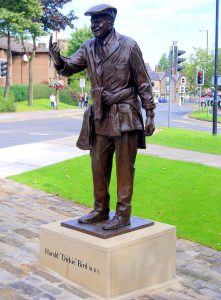
Image: Badics / CC BY-SA 3.0
We could go on all day but will stop here before it becomes monotonous however if you want to pursue a bigger list have a look here
Things to See and Do in Barnsley
Now that we have learned all about Barnsley, let’s turn our attention to the part you have all been waiting for… Barnsley attractions! If you were visiting for an overnight stay in Barnsley, where, what, and how, should you spend your time?
Historic Sights and Landmarks
One of the old priory buildings is still standing. Keep in mind that these were built all the way back in the 12th century – so they are crumbling in parts. Visit the Monk Bretton Priory to pay homage to the people who set up a successful town. The gatehouse was built in the 15th century but the ruined parts are older still. The whole site is now in the hands of English Heritage so, if you are looking for staycation attractions, go there and see it for yourself. It has entirely free entry but do make sure you give them a donation for all the hard work they do.
You will find old trinkets aplenty at the Barnsley Antiques Centre, or at the Eslecar Antiques Centre. If you have a car you can catch both on the same day. St Mary’s Church is another special sight to see, complementing the landscape and making a large part of the Barnsley skyline. Don’t forget to take a stroll down the Victorian Arcade, either. Although built in the Victorian style, it was actually thrown up in the ’60s when the town underwent some town centre renovations… still pretty though. Even better if you like shops.
Galleries and Museums
No trip to Barnsley can be truly appreciated without stopping in at the Elsecar Heritage Centre. This place is a conserved village, which is set in the industrial world of iron and coal mining. The workshops of old are now filled with shops – but the remarkable architecture still exists… as does the machinery all that iron and coal built.
Second, on our list of top Barnsley museums is the Experience Barnsley Museum and Discovery centre. This location features the town history and contains the town’s archives. If you are trying to trace someone from this area, this is where you go. While both of these places feature art to some degree, you really want Cooper’s Gallery if you are looking for fine art.
The Best Shopping in Barnsley
Barnsley Market is a must-see for those that love a bit of shopping. This indoor market is one of the older ones in town, but there are plenty of centres to choose from. It includes an outdoor section so you can go along in summer and still enjoy a fresh air walk. If you want more modern establishments the Barnsley Retail Park, The Barnsley Peel Retail Park, or the Alhambra Shopping Centres can all help out. We did tell you it was a shopping town!
Football and Other Sports
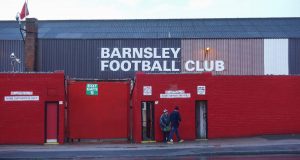
Image: Michael715/Shutterstock.com
Barnsley FC
You can check out Barnsley Municipal Golf Course for an afternoon, but be warned they have a fiver entry fee.
Let’s not leave our Barnsley RUFC, either.
Barnsley Cricket Club plays in the Yorkshire ECP County Premier League, which is the top tier of amateur cricket in the region. It is noted for its steady supply of players, who have gone on to play for Yorkshire and England. These include Geoffrey Boycott, Dickie Bird, who also became a top international umpire, Martyn Moxon and Darren Gough.
Outdoor Attractions
The top attraction over on Trip Advisor for Barnsley is an outdoor site. The RSPB has set up a station on the Old Moor, allowing you to spot birds, contribute to their conservation and, as all good RSPB sites do, it has tiny habitats for the children to enjoy. The Old Moor lets you experience the nature and wildlife of the Dearne Valley, where they also run a coffee shop and a visitor’s centre.
A personal favourite Barnsley attraction of ours is Wigfield Farm. This is a working farm and an accredited teaching college, which is totally open to the public. Go along and help out, pet some animals, and sea creatures that big-city-kids don’t often get to see. What could be better for getting them off that iPad?
Recreation in Barnsley
We can hear the locals screaming at us to include Calypso Cove waterpark. This particular location is one of those that you can let the kids run free in for an afternoon, safe in the knowledge that they will be exhausted and ready for bed when you get home. It has water slides, a pirate theme, and a price point that won’t make you angry.
Other Notable Attractions
Unfortunately, no list of things to see in any given area is exhaustive. There is so much more to Barnsley than we could ever hope to list all in one place… but we gave it a good old college try, just for good measure. Here are some of the sights that we couldn’t fit in, but that you may find are right up your (Barnsley) street:
- Locke Park is a great place to take the kids in Barnsley. They have a special play park there that borders on adventurous.
- Wentworth Castle Gardens are beautiful in summer, go along for a gorgeous floral walk.
- While you are at the heritage centre, stop by Elsecar park for a picnic.
There are a ton of others, but we promise we have tried our best.
Where to Eat, Drink and Party in Barnsley?
If you want some pizza or decent pasta check out the Secret Italian on McLintock Way. If you want to try something a little spicier, you will find Favella on Church Street and selling a unique Brazilian menu. After dinner, head to Jock’s Cavern for some live music, or go dance the night away at Volt nightclub. There are plenty of nightlife options that don’t disappoint.
How to Get to Barnsley?
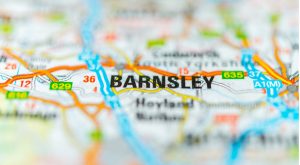
Image: Tudoran Andrei/Shutterstock.com
It’s that time again – when we have told you everything about Barnsley except how you get there. Don’t worry, as usual, we already sought out the answers!
By Road
It’s a simple drive to Barnsley from anywhere in the UK. Just drive up or down the M1 and you will pass it eventually.
By Air
Doncaster/Sheffield is closest, but Leeds Bradford is less than 30 miles away, too.
By Rail
Barnsley Station is on the Northern train line.
By Sea
There’s no sea access to Barnsley.
Got Five More Minutes?
If you are still on your break, or still trying to decide on your UK staycation destination, then we have a website full to brimming with different delights. Have you thought about Edinburgh? What about a weekend break in Manchester? Wherever you are headed, we have the scoop. All it takes is a quick visit to five minutes spare.
